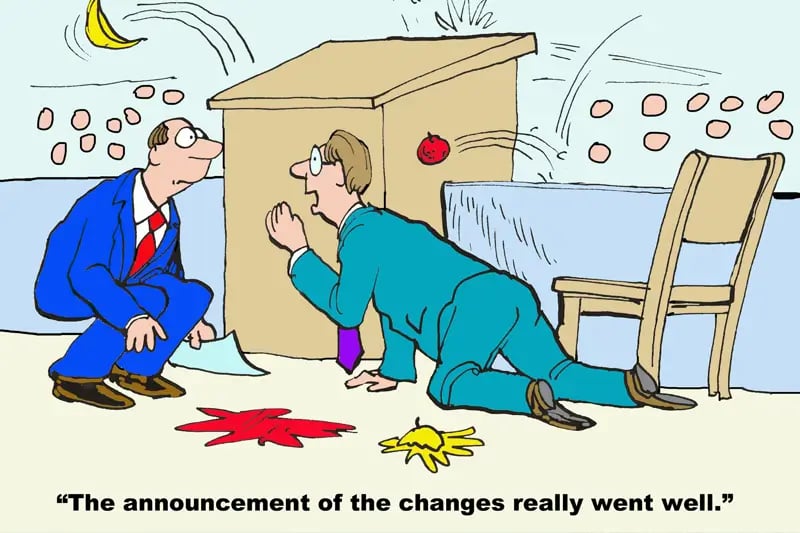How Often Should You Post on Social Media: A Small Business Guide
Running a small business is a full-time job in itself, and finding time for social media can feel like an extra task on the list. But here’s the...
Got a question, or need help with something?
A member of the LoudLocal team is on hand to help you.
The Brickyard, Unit 2, Queen's Rd, Kenilworth, Warwickshire, CV8 1JQ
5 Merchant Square, Paddington, London, W2 1AY
“It is not the strongest of the species that survives, nor the most intelligent that survives. It is the one that is most adaptable to change”. Charles Darwin.
The way many businesses have adapted to the pandemic so far has been inspirational! During this challenging time, the need to survive has driven them to change how their company operates entirely, from employees to customers, to suppliers and more. But what happens post-pandemic? No one knows what the new “norm” will look like, whether people will go back to working in an open office or whether the need to have a physical shop is more significant than ever before with retail giants no longer overshadowing their presence. If you’re a street food vendor, have you thought about what will happen when festivals re-open? Think again if you believe nothing will change or you will go back to the way it was.

Everyone has experienced a change in some way, shape or form. Sometimes, the smallest change affects us in a positive or more challenging way. Change is different from the “norm”, where you have to adapt temporarily or permanently. For example, up until a year ago, the “norm” would be to work from the office, where you are surrounded by peers and co-workers. But who would have thought organisations and people would have to adapt to working from home. Attending the countless video calls via Zoom/Microsoft teams has now become part of our daily routine from the comfort of our homes.
The main types of change are developmental, transitional and transformational.
A gradual change to improve a process that enhances existing areas of the business or resolves a current problem. These changes will be small and they will fine-tune your business operationally.
Unlike developmental, transitional is a larger type of change which is more challenging to implement. Such as, when you need to replace an existing procedure. It can involve structural changes or incorporating a new product or service or replacing a legacy system with a new advance system.
This change is a step further than transitional. The name itself means to produce a significant change towards a variety of areas. To considerably alter and make improvements to meet new demands. It can involve a major organisational, processes or cultural change within a company. It may even require a revision of the company’s strategy.
Similar to transitional, transformational change requires a structure, planning, successful implementation, careful post-change review and so much more. Without this, what you are trying to achieve may become extremely difficult and mere impossible to accomplish.
In most cases, a drive for change occurs when needs must be met (simply put). There are two causes of change which are internal and external factors. Internal is where a change is initiated by the business and external is a change from outside the company. There are so many causes that the list can go on and on.
Here is a small example of causes for such factors:
Internal factors can include performance, such as a business performing poorly in sales, leading to adverse financial results. The need to restructure may be required to adjust the performance issue and ensure initiatives are in place to reduce cost. A reduction in customer or employee satisfaction can also be part of the cause. It can also be a strategic move, so the company’s long term goal and aspirations are met.
External factors can include economic conditions, such as BREXIT, the shift in online sales vs retail stores (which we saw leap forward due to the pandemic). Social trends can also be a cause, where influencers are more than ever leading a product or service trend. Businesses may not want to damage their brand image if they use single-use plastics that go into landfill. There is increased pressure for a reduction in single-use plastic and more businesses are now using 100% recycled material which is safer for the environment.
If businesses do not adapt, then the implications can be astronomical! Woolworths is a prime example. A leading retailer in every location and once famous for a huge range of products – from kidswear, electricals, beauty products to groceries and household products. Their lack of understanding customers and resistance to alter their business model (due to the forever changing market) meant they fell behind against their competitors – who quickly embraced online shopping and undercut prices.
A rapid change can force a business to make changes to retain customers. The downside to this is you may have less time to iron out any problems and a systematic approach may only be half met.
One of the biggest impacts is to people. Each individual is different in their way, some may embrace change and be an advocate for it and some will resist (which can make it incredibly difficult to manage the transition). Most people think if everything is working just fine, then why not continue with it? That old saying of “if it’s not broke then don’t fix it”. Those that look at the bigger picture will have different thoughts about this. The art of continuous improvement is essential in a business! A system that works alongside changing needs requires time and investment from people. It is vital to support people. Clear communication and leadership are essential to getting buy-in and support during a change. Critical steps to follow are:

Strategy: Create or review your existing mission statement. Provide a direction and a vision for your business. Ensure your values align as necessary. It is essential to guide employees and give them a sense of purpose.
Leadership: People need a leader at this time, who is a role model and sets a good example by playing an active role in the change. It is imperative to foster trust with your employees and build credibility. You want your employees to be proud of the company, regardless of the change due to take place.
Good engagement: It is critical to communicate the business vision effectively. To tell a story of the company and what it wants to achieve collectively – aligning the company values, encouraging to work together to reach this goal. Explain the big picture and why this change needs to occur. It is an opportunity to listen to your employees and answer any questions they may have. The last thing you want is for people to be uncertain about their employment or what may happen and create a sense of ambiguity. So if you don’t know the answer to a question, make sure you get the answer sooner than later.
Create a team who will be managing the change and design initiatives: There are so many areas to cover that trying everything with one or two people is asking for trouble and the impossible. Clearly define roles and use appropriate resources to facilitate the entire process for change. For example, you need designated individuals to focus on employee engagement, circulate the change across your organisation and be your employees’ voice. You may even need someone like a project manager to support you.
Effectively integrate and execute: Ensure all aspects are covered relating to the change. Communicate and share the implementation plan with your stakeholders and across the business. Implement in phases, so you can assess and alter processes as needed.
Sustaining the change(s): Build continuous improvement techniques into your business. Involve the people’ doing the work’ to help identify problems and rectify them. Encourage the sharing of best practice across your business. Create development opportunities to help individuals improve their performance.
In conclusion, make sure your business is agile and able to adapt to the changes around it. Always think and plan for the next stages. The reasons why change is needed can be overwhelming, so use the steps above to help you with this and give you a structure.
No matter how small or large a change is, it can bring mixed emotions from your employees, particularly those afraid of change and like things just as they are. It is critical to clearly communicate with your employees on what you are doing and the reasons why. It’s useful to include your employees as much as possible to capture their views, contributions and any concerns they have – which will reduce the resistance to change.
I hope you found this article useful. Please comment and let me know your thoughts on this.

Running a small business is a full-time job in itself, and finding time for social media can feel like an extra task on the list. But here’s the...

Running a trades business takes a lot of time and energy. You’re busy on site, chasing quotes, and keeping customers happy. But while you’re focused...

If you’re a tradesperson, you already know how competitive it is out there. Whether you’re a plumber, electrician, builder, or landscaper, chances...

6 min read
Since the pandemic, the number of e-commerce websites has exploded. Many traditional retailers who previously benefited from having a...

5 min read
In this article, I will go through how you can use agile principles to suit your business and marketing needs but first lets’ start from the...

When we hit economic crisis, often, marketing is the first budget to be cut. However, keeping on top of marketing within your company is essential to...